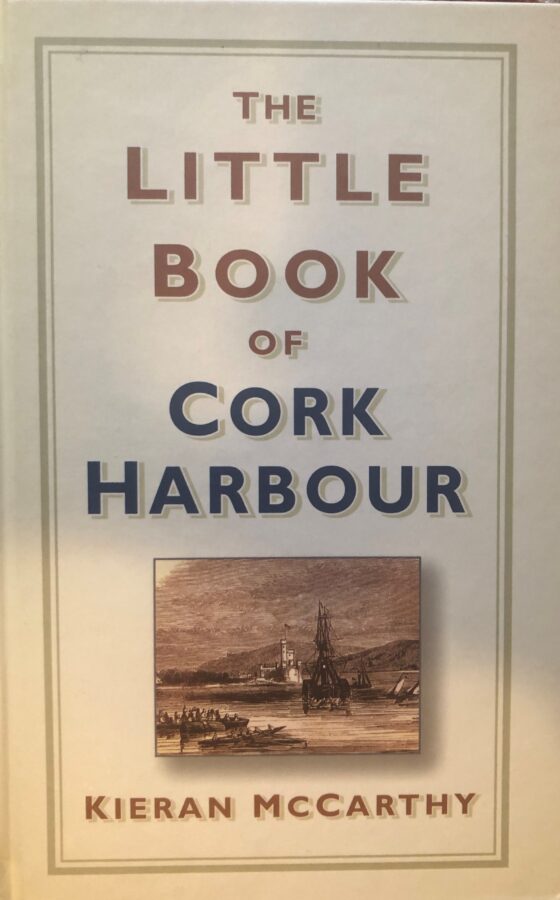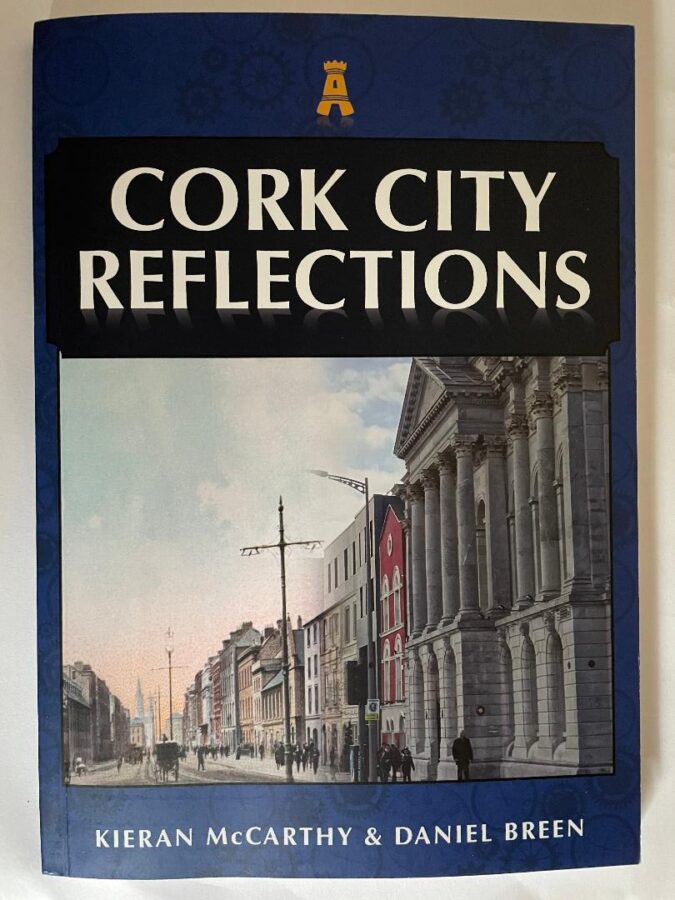29 December 2021, “Good design, good architecture can make or break a sense of place in a neighbourhood. Queen’s Old Castle Shopping Centre was the site of one of the towers – called King’s Castle- which controlled the medieval Watergate and medieval dock- this tower is shown in the city’s coat of arms. In essence, this is where the trade of our port city began over 700 years ago. Adaptation of the site may also be required if the foundations of the tower are discovered or even other prominent archaeological features” Cllr McCarthy said, Mixed reaction to proposals for Queen’s Old Castle redevelopment, Mixed reaction to proposals for Queen’s Old Castle redevelopment (echolive.ie)
Monthly Archives: December 2021
The Blessing of a Candle, 24 December 2021
by Cllr Kieran McCarthy
Sturdy on a table top and lit by youngest fair,
a candle is blessed with hope and love, and much festive cheer,
Set in a wooden centre piece galore,
it speaks in Christian mercy and a distant past of emotional lore,
With each commencing second, memories come and go,
like flickering lights on the nearest Christmas tree all lit in traditional glow,
With each passing minute, the flame bounces side to side in drafty household breeze,
its light conjuring feelings of peace and warmth amidst familiar blissful degrees,
With each lapsing hour, the residue of wax visibly melts away,
whilst the light blue centered heart is laced with a spiritual healing at play,
With each ending day, how lucky are those who love and laugh around its glow-filledness,
whilst outside, the cold beats against the nearest window in the bleak winter barreness,
Fear and nightmare drift away in the emulating light,
both threaten this season in almighty wintry flight,
Sturdy on a table top and lit by youngest fair,
a candle is blessed with hope and love, and much festive cheer.
Happy Christmas to Everyone!
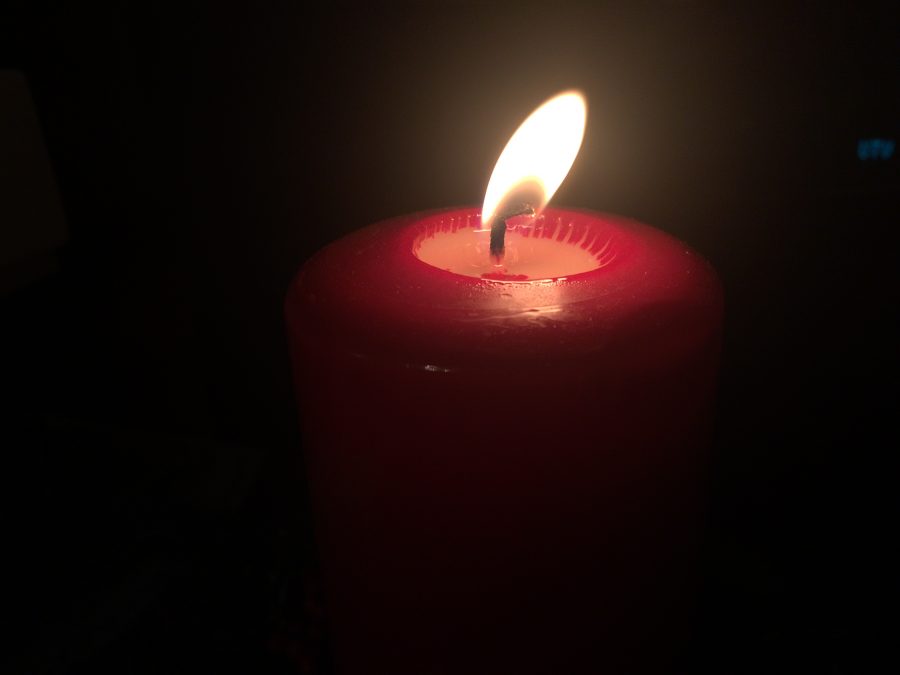
Kieran’s Our City, Our Town, 23 December 2021
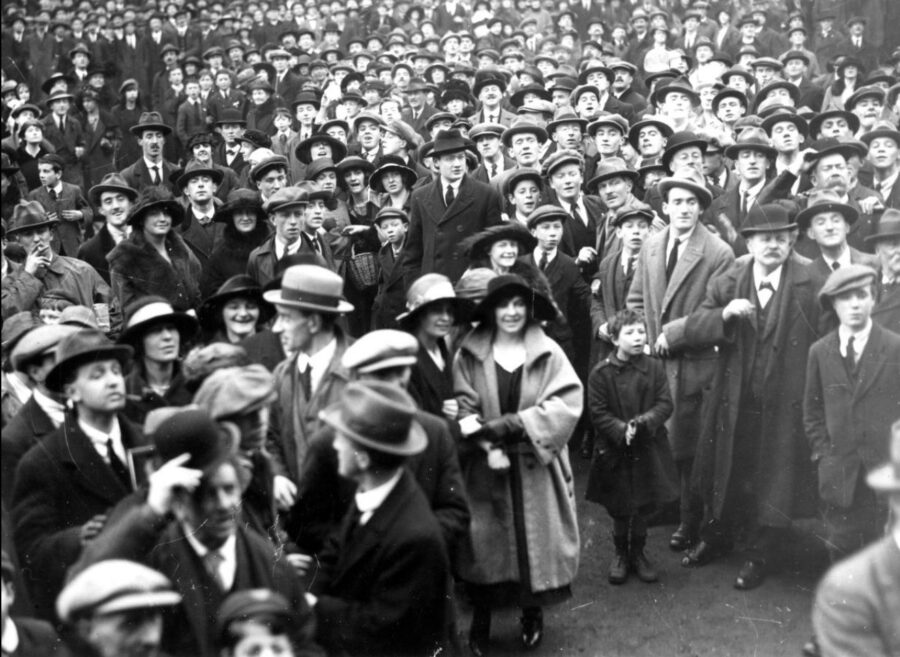
Kieran’s Our City, Our Town Article,
Cork Independent, 23 December 2021
Journeys to a Truce: The Treaty Debate Begins
On 9 December 1921, the publicity department of Dáil Éireann issued a statement by President Éamon de Valera. He noted that to prevent misunderstanding the public should realise that the treaty signed by the plenipotentiaries must be ratified by Dáil Éireann and the British parliament in order to take effect.
The usual process would be for the Cabinet of Dáil Éireann to introduce the treaty agreement and sanction it. Owing to the fact that in the latter stages of the negotiations the views of the delegation of plenipotentiaries differed from those of certain members of the cabinet, this course was not to be taken. The motion for ratification, De Valera, noted, would be introduced to the wider Dáil chamber by Arthur Griffith as chairman of the Irish delegation to London.
On Wednesday 14 December 1921 at University Buildings, Earlsfort Terrace at 11am, Dáil Éireann, opened its session to the public. The minutes of the meeting and those that followed are now digitised at www.oireachtas.ie. There was almost a full attendance by members. After discussing details leading to the appointment of the plenipotentiaries and the powers conferred on them De Valera asked that the session be private for the remainder of the day. He openly complained that the final text of the agreement reached in England was not submitted to Dublin before it was signed.
Michael Collins arose and said he was not in favour of a private session. He protested against what he called an unfair action on the part of the president in reading one document when he did not read another, which was equally vital viz- the credentials signed with the president himself to the plenipotentiaries when going to England. He then read in public a document, which declared that they were empowered, on behalf of the Irish Republic, to negotiate and conclude a treaty or treaties with representatives of Britain.
The private session was of a very protected nature and lasted until late into the evening. The doors and rooms of the meeting rooms were strongly protected by IRA volunteers. No one was allowed within the presence of the college buildings except accredited pressman. The private session continued the following two days on 15 and 16 December.
In the meantime, the special Irish session of the British parliament opened also on 14 December. The King’s speech expressed the hope that by the articles of agreement to be submitted to the house the “strife for centuries maybe ended that Ireland, as a free partner in the Commonwealth of Nations forming the British Empire”, and that Ireland would secure the fulfilment of its “national ideals”. In the extensive debate that followed Prime Minister Lloyd George spoke early in support of the treaty.
Dáil Éireann re-opened to public session the following Monday morning on 19 December. Arthur Griffith moved the ratification of the treaty, which was seconded by Commandant Seán McKeown. Griffith noted in an extensive speech that the task that was given to the plenipotentiaries was very difficult noting – “We faced that task. We knew whatever happened we would have our critics and we’ve made our minds up to do whatever was right and disregard whatever criticism might occur. We could have shirked the responsibility. We did not seek to go as the plenipotentiaries. Other men were asked; other men refused. We went. The responsibility is on our shoulders. We took the responsibility in London and we take the responsibility in Dublin. I signed the treaty not as an ideal thing but fully believing what I believe now was the treaty honourable to Ireland and safeguarding the interests of Ireland”.
In response De Valera gave his own extensive reaction noting he was against the treaty and that it would not end the centuries of conflict between the two nations of Great Britain and Ireland; “We went out to affect such a reconciliation and we’ve got back a thing, which will not reconcile Great Britain and Ireland and will not reconcile our own people. If there is to be reconciliation it is obvious that the parties in Ireland that typified national aspirations for centuries should be satisfied and the test of every agreement was whether the people were satisfied or not. Because of the conditions of war there are many people who might approve but if they had a small election now and got a vote of the people, the treaty would not reconcile the nations. It would mean a renewal of the contest after the act of union…They were threatened with immediate war and they were faced with a pistol at their head”.
De Valera expressed the view that the document that was signed in effect was under duress. He wanted the treaty and the constitution that when an Irishman met an Englishman he could, as a freeman, shake him by the hand. This document, in his opinion, made “British authority the master in Ireland”. Concluding De Valera noted, “do you think that because you signed documents like this you can change the current and tradition? You cannot; some of you are relying on that ‘cannot’ when signing this treaty but don’t put a barrier in the way of future generations…You are presuming to set bounds to the onward march of a nation “.
After several hours of debates, where members put forward their opinions on the signed Treaty, and after listening carefully, Michael Collins took the floor. Responding to the threat of Britain in the negotiations, Collins noted he has not been afraid to call the bluff of the British negotiators. He noted: “It has been suggested that the delegation had gone down before the first base of British bluff, but if they did there was a big bit of British bluff, which went on for the last two years and I did not breakdown before that bluff”.
Collins continued; “The treaty was not signed under personal intimidation if it had been offered under that threat the delegation would not have signed it…We know we have not vanquished the enemy, and have not driven them out of the country. The members do not understand the immense powers and liberties which the treaty gives them. If the treaty gives them security and freedom then it has satisfied their aspirations…it gives us freedom not the ultimate freedom, which all nations aspire to, but the freedom to achieve it”.
Collins maintained the disappearance of military strength from the country was proof of the achievement of national liberty. He highlighted: “Ireland was of course the weaker nation, and of course would be so for a long time, but as to certain guarantees we are guaranteed by countries of the constitutional status of Canada, Australia and South Africa”.
To be continued in the new year…
Happy Christmas to all readers of this column.
Missed one of the 50 other columns this year, check out the indices at Kieran’s heritage website, www.corkheritage.ie
Caption:
1131a. A crowd scene outside the National University buildings on Earlsfort Terrace, Dublin, awaiting ratification of the Treaty, Late December 1921 (source: National Library of Ireland, Dublin).
Cllr McCarthy: Empowering Regions Crucial – Debate with President Macron, December 2021
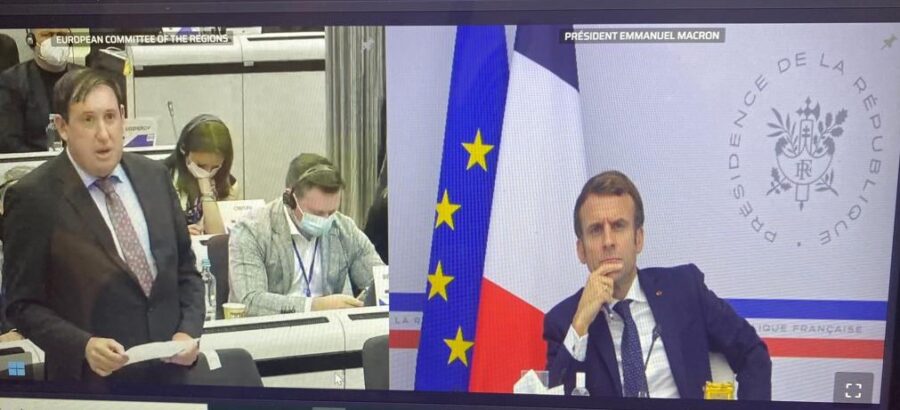
Independent Cllr Kieran McCarthy, this month, led calls to French President Emmanuel Macron for more consultation with citizens on the future of the European Union
In the December European Committee of the Regions plenary session, Cllr McCarthy, member, used his two minute online debate slot with the President to call for more investment into small cities and in rural, mountain and island regions. In particular, he asked for less centralisation of budgets and decision making in the EU.
Cllr McCarthy thanked the French President for his support in the Brexit negotiation with the EU, adding that this has been particularly helpful in maintaining peace and ensuring no hard border on the island of Ireland.
Cllr McCarthy noted: “I hope we will make progress on areas, which need investment and sometimes areas that feel forgotten about especially our rural mountainous and island regions we need to really focus on smart inclusive development with a specific focus on those regions and the best way to do this is from the bottom up. From Cork to Corsica our citizens deserve to be heard. Ultimately if you empower the regions, the EU will be a success”.
In recent months, Cllr McCarthy has strongly lobbied at EU level that local and regional authorities such as Cork City Council, who are on the forefront of the fight against the Coronavirus pandemic must be supported by EU Funds. He also raised the plight of SMEs in smaller European cities such as Cork and that any emergency EU funding released needs to get to the citizen on the actual ground and not be held up at central government level.
The European Committee of the Regions is a 329 person formal EU assembly of councillors, Mayor and Regional Presidents from over 270 regions in the EU.
LISTEN to Kieran’s comments here:
Kieran’s Our City, Our Town, 16 December 2021
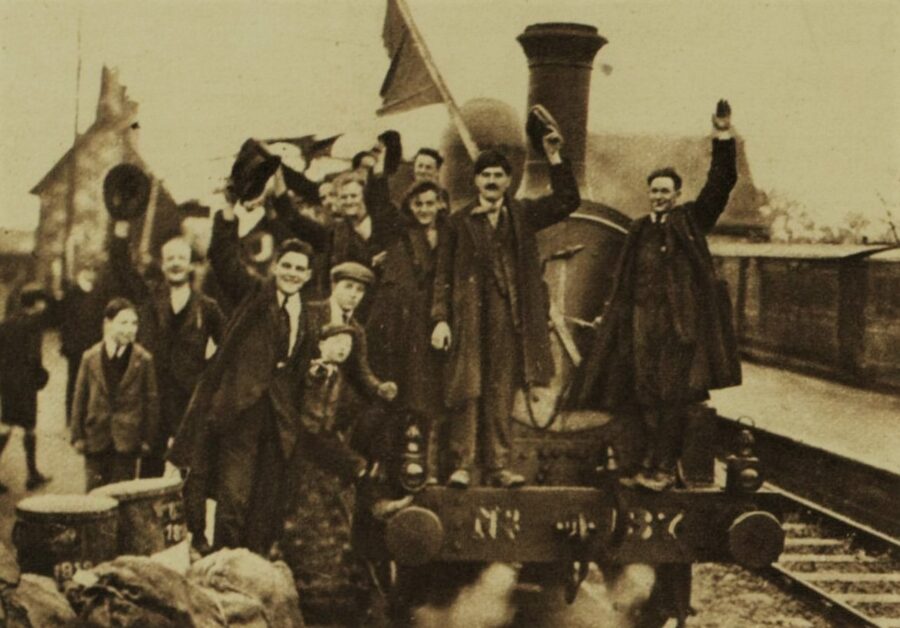
Kieran’s Our City, Our Town Article,
Cork Independent, 16 December 2021
Journeys to a Truce: The Release of the Internees
Within forty-eight hours after the details of the Articles of Agreement were signed on 6 December 1921, the British government approved the release of all people who had been imprisoned under the Restoration of Order (Ireland) Act, known to many as the Coercion Act. The order did not extend to prisoners who had been either convicted or who were under trial. Between 3,000 and 4,000 prisoners were released from Ballykinlar Camp in County Down, the Rath Camp in the Curragh, Portlaoise Jail as well as from Waterford, Cork, Kilmainham, Mountjoy and other prisons respectively. Special train services have been arranged to transport the liberated men and women home.
At Ballykinlar, County Down, on Thursday 8 December the southern internees were up at 6am and marched from the camp to the nearest station, TullyBridge, where they connected with the Great Northern Railway. Three special trains brought the men to Dublin, from where the internees made their own way to their home counties. Their luggage was taken in military lorries. The previous night the men were allowed to wander about the camp freely.
The Cork Examiner describes that on one train Sinn Féin flags were displayed, and at Newcastle a large crowd welcomed the ex-prisoners and supplied them with tea, cigarettes and fruit. The train proceeded with its journey. At Katesbridge near Banbridge, County Down, stones and nut bearings were flung at the train by Loyalists and shots were also discharged. Two of the prisoners were slightly wounded. The last carriage had hardly passed out of Katesbridge station when a shower of stones from an unseen quarter rattled upon it. Several cars were struck, and windows broken.
In the next few hundred yards shots were fired from the left on side of the track, apparently from behind the hedge, and then shortly, two from the right came. One bullet passed through the window of a parked compartment, smashing the glass and sending splinters of the window pane over the prisoners. One was severely lacerated by the glass and the second had a very narrow escape. He was sitting by the window and a bullet passed right in front of his face and right out of the open window of the carriage door. In another compartment a John Fitzgerald of Kilbritain County Cork was struck in the head by flying glass. First aid was rendered by his companions. At Banbridge the train was again attacked after passing the station stones rattled off the carriage sides broke some windows.
The train eventually arrived at Dublin’s Amiens Street station (now Connolly Station) and crowds of people awaited the newly released interns. A mass of general public lined the platform on the station precincts and all along Talbot Street to the O’Connell Monument.
A Cork Examiner reporter spoke to a few of the released southern internees. They noted that they had no chance of reading yet the nature of the difference of opinion between the leaders as regards the Treaty terms and would not express any opinion on the matter.
The train bound for Cork City commenced its journey at 10am on Friday morning. It contained about 400 men, but of those, only about 100 came to Cork – the others having left the various stations on the way home. All along the route, the people crowded the station platforms patiently awaiting the train and the ex-internees were given a rousing welcome.
Long before the train is due in Cork City, the platform, the station precincts, and approaches were packed. Hundreds stood on the nearby bridge over the railway and many others occupied positions on the steps leading up to St Luke’s, and money were waiting along the Lower Road and MacCurtain Street.
The excited crowds on the platform gave even the passing of single engines and the lines of people increased with tears, surged to and fro, laughing and shouting, and the best of good humour. Many climbed on seats and railings to get a better view.
When the bell denoted the train approached the excitement became intense. The advent of the train a few minutes later at 2.30pm was greeted with thunderous cheers with fog signals released adding to the uproarious demonstration.
Three tricolours were fixed to the front of the engine and from every window flags were waved for the homecoming man. On each of the carriages such inscriptions and chalk, as “Up Spike”, “Sinn Féin abú”, were written, amongst other messages.
The eagerness to which the crowds rushed to the carriage doors made it impossible for the prisoners to step onto the platform, until a path had been cleared for them. Then the eagerness was replaced by conversations, laughter, congratulations, and personal welcomes. The crowd slowly left the platform. The released men left the station grounds on vehicles of all descriptions, and drove off with the relatives to the different parts of the city. Hundreds lined both sides of the road for some distance from the station entrance with the public cheering, waving hats and handkerchiefs with the ex-internees joyfully responding.
Four special carriages were dispatched out from Cork on Friday morning, 9 December on the West Cork Rail line to support the released internees from Bere Island. On Bere Island two hundred prisoners were loaded onto to War Office steamers to Bantry where the special train conveyed them to Cork. The whole Bere Island and the adjacent mainland was ablaze with bonfires on the release.
Caption:
1130a. Released prisoners from Maryborough Internment Camp, Portlaoise, celebrating while standing on an engine (source: Illustrated London News, 17 December 1921).
Kieran’s Question to CE and Motions, Cork City Council Meeting, 13 December 2021
Question to the CE:
To ask the CE for an update on the opening of Marina Park and the final cost of its completion and the sources of funding? (Cllr Kieran McCarthy).
Motion:
That City Library’s Cork Past and Present website be put back together online as soon as possible. It plays a very supportive role in the study of local history and genealogy in the city and region (Cllr Kieran McCarthy).
McCarthy: Marina Park set to open, 13 December 2021
Kieran’s Comments:
“The park looks great and will add immensely to The Marina district. It’s been a long two years with construction work stopping and starting due to Covid 19. Phase one works has also comprised the construction of a new public car park at the Shandon Boat Club end of the Marina, as well as a new cycle lane and pedestrian walkway – these are all now completed and are very well used”.
“One can also see that the installation of perhaps the most eye-catching part of the project – a noticeable red steel pavilion on the site of, and replicating, the central hall of the former Munster Agricultural Showgrounds. The showgrounds at its cultural height in the twentieth century attracted tens of thousands of people, who enjoyed what the Spring and Summer shows had to offer.
The new park is a modern offering on the site, which will attract citizens from across the city and region. The sides of the pavilion reflecting the society’s former buildings will not be enclosed, and there will be possibilities for coffee pods and outdoor seating and arts and crafts. The project is a e.10m investment into the area, of which nearly e.5m came from EU Urban Sustainable Funds, which are part of the EU’s structural funds and are a crucial source of funding for cities”. The EU source of income will need to be chased once again so that phase 2 of Marina Park can be delivered”, concluded Cllr McCarthy.
11 December 2021, ” “The new park is a modern offering on the site, which will attract citizens from across the city and region. The park or project represents an estimated €10m investment into the area, of which around €5m came from EU Urban Sustainable Funds — part of the EU’s structural funds and “a crucial source of funding for cities”, Cllr McCarthy said, New park in Cork city to open to the public from Monday, New park in Cork city to open to the public from Monday (echolive.ie)
Kieran’s Our City, Our Town, 9 December 2021

Kieran’s Our City, Our Town Article,
Cork Independent, 9 December 2021
Journeys to a Truce: A Provisional Treaty is Signed
The first memo to the public was a short one on the outcome of the talks of the Anglo-Irish Treaty of 1921. It was hurriedly penned by Arthur Griffith, and issued to the world press directly after signing the Treaty on 6 December. It reads: “I have signed a Treaty of peace between Ireland and Great Britain. I believe that treaty will lay foundations of peace and friendship between the two Nations. What I have signed I shall stand by in the belief that the end of the conflict of centuries is at hand”.
It was a long and highly pressurised journey to an agreement for both sides. The threat of renewed violence hung over the signatories. The Treaty negotiations began in London on 11 October 1921. The British team was led by seasoned politicians Lloyd George and included Austen Chamberlain and Winston Churchill.
The Irish team was chaired by Minister for Foreign Affairs Arthur Griffith, after de Valera decided to stay in Ireland for strategic reasons. Arthur had established Sinn Féin in 1905 and nationally brought the party to the pinnacle of success in elections in 1920. Arthur was substitute president of Dáil Éireann for most of the War of Independence while de Valera was in America. With Arthur in London were Minister for Economic Affairs, Robert Barton and Minister for Finance Michael Collins. The other two Irish negotiators were solicitor Éamonn Duggan TD and Charles Gavan Duffy TD, a barrister and Dáil Éireann’s representative in Rome. The Dáil and de Valera described these representatives as ‘plenipotentiaries’, from the Latin for someone invested with full authority.
Over the seven weeks of negotiations, regional newspapers across the country reported on the tense negotiations and what was at stake between the two sides. The challenge of North Ireland and its historic loyalist base echoed throughout the myriad of news stories.
The discussions concluded in the early morning of 6 December 1921 with the signatures, by British and Irish negotiators, of ‘Articles of Agreement’ – better known as the Anglo-Irish Treaty (or the Treaty). The deal, as signed, was provisional, on consent in London’s Westminster and in Dublin’s Dáil Éireann.
The Anglo-Irish Treaty is a short document. It commences by declaring that the Irish Free State shall have the same constitutional status as the dominions of Canada, Australia, New Zealand and the Union of South Africa. This was a higher status than the previously sought ‘Home Rule’ for Ireland, and an achievement that was unimaginable when Sinn Féin was founded sixteen years earlier. The representative of the king in Ireland would be appointed in the same way as the governor-general of Canada.
Under the Treaty, Ireland also remained in the British Empire. For the first time in an official UK document the term ‘Commonwealth’ was used as an alternative to ‘Empire’. The final agreement did not require Dáil deputies to swear an ‘oath of allegiance’ to the king. The oath of allegiance was to the Constitution of the Irish Free State, with an oath of faithfulness to the monarch. Nevertheless, any oath to the king in any shape or form offended many Dáil deputies in their initial thoughts to the press.
The Treaty also gave the new state financial freedom, although the Irish agreed to pay a fair share of existing UK public debt.
Until the Irish Free State could undertake its own coastal defence, article six ensured that British forces were responsible for the defence by sea of Britain and Ireland. The Free State was also to let Britain use certain named harbours and other facilities. Initial thoughts by some Dáil deputies resented that Britain would retain ‘the Treaty ports’ of Cobh (then ‘Queenstown’), Berehaven and Lough Swilly. The issue of the Treaty ports was important because it made Irish neutrality quite impractical if not impossible in the event of war.
The Irish Free State agreed to pay fair compensation to public servants who were discharged or who retired because the change of government was not to their liking. This ‘article’ did not apply to the Auxiliaries and Black and Tans.
The Treaty gave Northern Ireland the right to opt out of the new Irish state; if it did so, however, a boundary commission was to be set up to “determine in accordance with the wishes of the inhabitants […] the boundaries between Northern Ireland and the rest of Ireland”. Arthur Griffith and Michael Collins believed that this would transfer counties Tyrone and Fermanagh to the Free State. But the procedure was a major sticking point for many Dáil deputies in their initial thoughts to the press. Even after 1922, however, the Boundary Commission never worked as they had hoped, and the border remained unchanged.
Overall, though in the days that followed the signing on 6 December, the Irish negotiators though not happy with the terms, were told by Lloyd George that non-acceptance would lead to a resumption of the war, which, at the point the Truce was called, was being lost by the IRA. The delegation recommended the Treaty to Dáil Éireann.
In those early days post the signing, a minority of Dáil deputies, including its president, Éamon de Valera, maintained that the Treaty did not go far enough and that the new state must be a republic outside the Empire (although perhaps associated with the Commonwealth externally). Some thought that fighting should resume, in an effort to force Northern Ireland into an all-island state. For others, an Irish Republic already existed and acceptance of the Treaty would substitute this with something less and accepting the Treaty meant voluntarily going ‘into the Empire’ for the first time.
The majority of deputies argued that the Treaty was a stepping-stone to greater independence. Between the signing of the agreement in December 1921 and its ratification in early January 1922 a series of progressively bitter debates occurred in Dáil Éireann.
Caption:
1129a. An artist at the Illustrated London News captured the British and Irish Treaty negotiation teams at work (source: Illustrated London News, December 1921).
McCarthy: Cork City Arts Strategy Open for Public Consultation, 4 December 2021
Independent Cllr Kieran McCarthy is calling upon the community and artistic sector across the city and especially in the south east to engage with the public consultation on the new Cork City Arts Strategy. The Arts Office of Cork City Council are now developing a new strategy to guide their work over the next five years. They want to ensure that arts and culture in Cork City is the very best it can be. To help them with thinking and planning, they would like to understand more about what people think and feel about arts and culture in Cork City now and to gather their hopes and ideas for the future.
Cllr McCarthy noted: “Cork City Council has consistently invested in and supported the arts. There are many different tools at their disposal for the development of the arts. These include ideas generation, funding support, infrastructural support, resource and staffing support. Planning for the future, assessing the impact of our work to date and consolidating cultural infrastructure are all crucial elements to plan for going forward”.
“On Cork City’s public consultation portal under the survey section (www. consult.corkcity.ie/en/surveys) is a short survey and gives you the opportunity to share your views and inform what we do in the years ahead. The survey is confidential and contains short questions looking for public input. The survey will remain open until 6 December at 5pm”, concluded Cllr McCarthy.
Kieran’s Our City, Our Town, 2 December 2021
Kieran’s Our City, Our Town Article,
Cork Independent, 2 December 2021
Kieran’s Cork Books for Christmas
It’s only a few weeks to Christmas. There are two publications of mine, which readers of the column might be interested in. In my new book Cork City Reflections (Amberley Publishing, 2021), Dan Breen and I build on our previous Cork City Through Time (2012) publication as we continue to explore Cork Public Museum’s extensive collection of postcards.
People have been sending, receiving and collecting postcards for well over 150 years. They have always come in a variety of forms including plain, comedic, memorial, and of course topographical. Their popularity reached its zenith in the two decades before the outbreak of First World War when people used postcards for a variety of everyday reasons from ordering shopping to making appointments. Postcards have been described as the ‘social media’ of the Edwardian period as it is estimated that about one billion penny postcards were sold annually in the United States alone between 1907 and 1915.
The old postcards within Cork City Reflections show the city of Cork to be a place of scenic contrasts. They are of times and places, that Corkonians are familiar with. Many of the postcards show or frame the River Lee and the tidal estuary and the intersection of the city and the water. The postcards show how rich the city is in its traces of its history. The various postcards also reflect upon how the city has developed in a piecemeal sense, with each century bringing another addition to the city’s landscape.
Some public spaces are well represented, emphasised and are created and arranged in a sequence to convey particular meanings. Buildings such as a City Hall, a court house or a theatre symbolise the theatrics of power. Indeed, one hundred years ago in Ireland was a time of change, the continuous rise of an Irish cultural revival, debates over Home Rule and the idea of Irish identity were continuously negotiated by all classes of society. Just like the tinting of the postcards, what the viewer sees is a world which is being contested, refined and reworked. Behind the images presented is a story of change – complex and multi-faceted.
We have grouped the postcards under thematic headings like main streets, public buildings, transport, and industry. The highlight of Edwardian Cork was the hosting of an International Exhibition in 1902 and 1903 and through the souvenir postcards we can get a glimpse of this momentous event.
The Little book of Cork Harbour has been published by The History Press (2019). Cork Harbour is a beautiful region of southern Ireland. It possesses a rich complexity of natural and cultural heritage. This is a little book about the myriad of stories within the second largest natural harbour in the world. It follows on from a series of my publications on the River Lee Valley, Cork City and complements the Little Book of Cork (History Press, 2015). It is not meant to be a full history of the harbour region but does attempt to bring some of the multitudes of historical threads under one publication. However, each thread is connected to other narratives and each thread is recorded to perhaps bring about future research on a site, person or the heritage of the wider harbour.
In the book the section, Archaeology, Antiquities and Ancient Towers explores the myriad of archaeological finds and structures, which survive from the Stone Age to post medieval times. Five thousand years ago, people made their home on the edge of cliffs and beaches surrounding the harbour. In medieval times, they strategically built castles on the ridges overlooking the harbour.
The section, Forts and Fortifications, explores the development of an impressive set of late eighteenth-century forts and nineteenth century coastal defences. All were constructed to protect the interests of merchants and the British Navy in this large and sheltered harbour.
The section, Journeys Through Coastal Villages, takes the reader on an excursion across the harbour through some of the region’s colourful towns. All occupy important positions and embody histories such as native industries, old dockyards, boat construction, market spaces, whiskey making and food granary hubs. Each add their own unique identity in making the DNA of the harbour region.
The sections, Houses, Gentry and Estates and People, Place and Curiosities, respectively are at the heart of the book and highlight some of the myriad of people and personalities who have added to the cultural landscape of the harbour.
The section, Connecting a Harbour, describes the ways the harbour was connected up through the ages, whether that be through roads, bridges, steamships, ferries, or winch driven barges.
The eighth section, Tales of Shipping, attempts to showcase just a cross-section of centuries of shipping, which frequented the harbour; some were mundane acts of mooring and loading up goods and emigrants but some were eventful with stories ranging from convict ships and mutiny to shipwrecks and races against time and the tide.
The section entitled Industrial Harbour details from old brickworks, ship buildings to the Whitegate Oil Refinery. Every corner of the harbour has been affected by nineteenth century and twentieth century industries.
The last section Recreation and Tourism notes that despite the industrialisation, there are many corners of the harbour where GAA and rowing can be viewed as well as older cultural nuggets such as old ballrooms and fair grounds. This for me is the appropriate section to end upon. Cork Harbour is a playground of ideas about how we approach our cultural heritage, how were remember and forget it, but most of all how much heritage there is to recover and celebrate.
Both Cork City Reflections (2021) & The Little Book of Cork Harbour (2019), and Kieran’s other books are available in Waterstones, Vibes and Scribes and Nano Nagle Place.
Captions:
1128b. Front cover of The Little Book of Cork Harbour (The History Press, 2019) by Kieran McCarthy.
